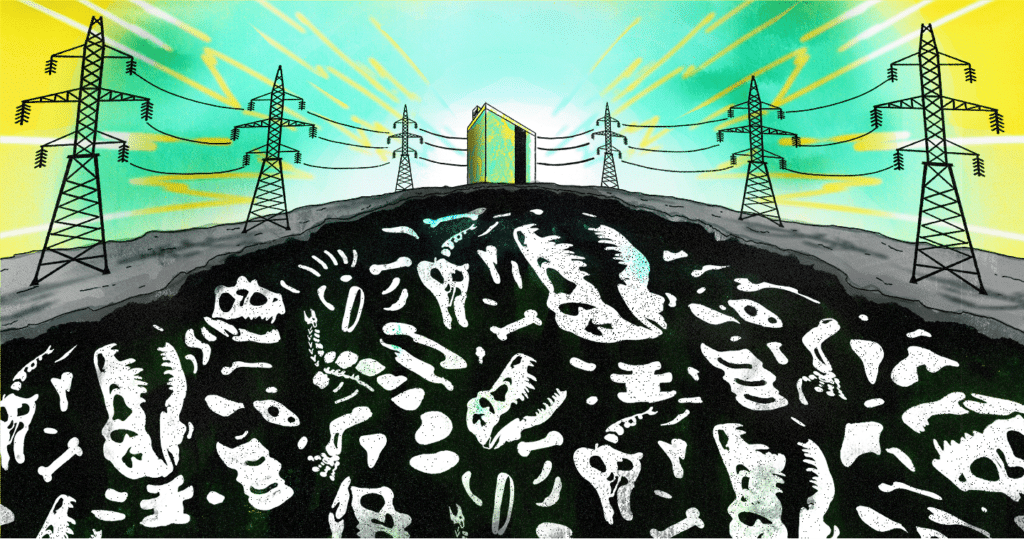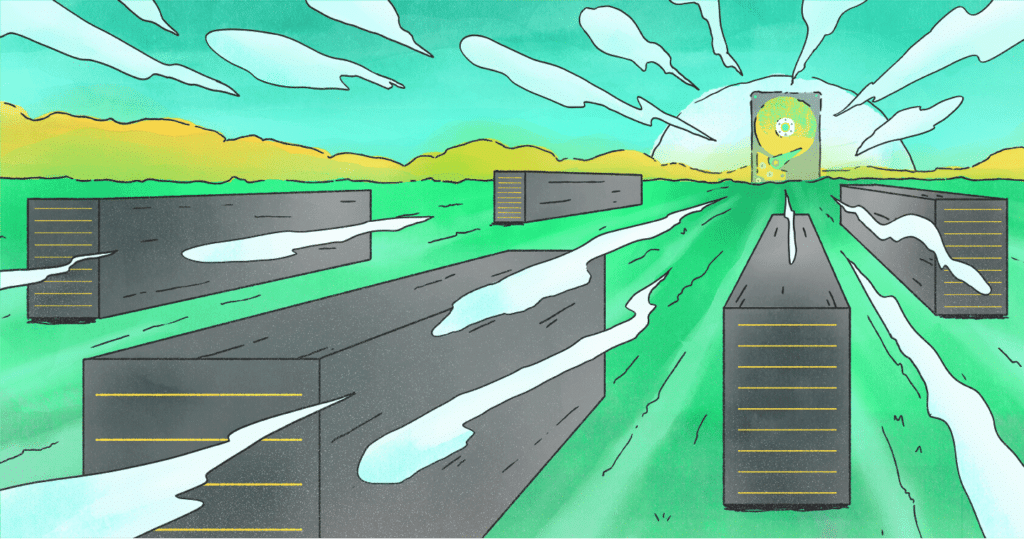A Green Start: The Data Center’s Role in Climate Change
Just as factories fueled the growth of the Industrial Revolution, the data center is at the core of the Information Age. Entertainment, public services, and private communications are all stored or mediated by it, and as more users join virtual spaces, the demand for fast and reliable digital services grows.
But, data centers come with a profound impact on the climate. Data centers are power-hungry and use copious amounts of water, burdening some communities in which they’re erected. In the face of the climate crisis, these technological institutions needs to adapt. Power efficiency is an important way to balance growth with protecting the planet.
Hyperscale data growth
The amount of data created on the internet grows exponentially every year. According to one report, humanity will create 175 zettabytes of data by 2025, largely driven by the growth of video. According to the same report, 90% of the data created on the internet has been created in the last two years.
As the amount of data grows, so does power consumption. To power just one rack requires around eight KWh on average, and some data center customers paid as much as $250 a month per kilowatt hour in 2023, a 43% increase from the previous year. Extrapolate those costs over the more than 5,000 data centers across the United States, and the true scale of this challenge comes into focus.
“[One and a half percent] of total power consumption in the US is from the data center, and it’s only growing,” said Dr. Eric Woodell, an independent data center analyst and auditor.
“We keep making incremental improvements, but they can’t outpace the growth. That’s why it’s important to make these sustainability changes now rather than five or 10 years down the line,” he continued.
It’s easy to think of streaming a movie or doing online banking as a climate-neutral activity, but the data centers that power those activities obtain power from local grids, many sourced from fossil fuels. The additional burden of cooling the data center has a major impact on local water supplies.
“Data centers are now an essential utility, and their campuses and development are moving closer to urban population centers, placing strains on local infrastructure, such as electricity, water, and sewer systems,” said Josh Fluecke, senior principal and co-director of the critical facility practice at Syska Hennessy.
“It is becoming apparent to data center owners and citizens alike that data centers need to be more climate-conscious,” he said.
The reality is that data centers, as vital as they are for the economy and modern comforts, are a huge climate challenge for today, not tomorrow. As the next billion users come online in the coming decade, the work must start now. Hyperscalers are making progress, through adopting renewable energy sources and pledges to replenish water, among other efforts. While systemic changes in power and water are key, engineering and technology have a vital role to play, too.

Optimizing the data center
With its products powering some of the largest data centers in the world, Western Digital is uniquely positioned to draw down power consumption in the data center. Engineers at the company approach the problem from multiple angles to ensure data centers meet climate goals and consumer demands.
First, a data center is carefully planned and constructed to optimize space and performance, so squeezing more data onto each individual hard drive through technologies like SMR and UltraSMR can prolong a data center’s utility.
“With higher-capacity drives, data centers can achieve the same storage capabilities while reducing the overall number of drives required,” said Xiaodong Che, chief technology officer of Western Digital’s HDD business unit. “This leads to a smaller facility footprint, less complex supporting infrastructure, and reduced energy and resource consumption.”
The efficiency benefits of these technologies are clear. Running a data center full of 26-terabyte hard drives versus 18-terabyte hard drives decreases the watts per terabyte by 29%. According to Che, increasing the capacity of individual drives in this example can also cut data center costs 20 to 25%.
On top of the drives themselves, Western Digital has developed unique technologies, such as the ArcticFlow Thermal Zone Cooling design in the company’s data center storage servers. By rearranging the drives and other hardware, this design channels cool air through the chassis, keeping the system at a lower, more consistent temperature. Consistently cooler temperatures reduce the workload of fans, which saves power and requires less cooling.
“Our work represents not only an efficient use of space but also a commitment to more environmentally friendly and cost-effective data storage solutions,” Che said.
Thinking outside the box
While working on technology and design innovations, Western Digital is also collaborating with partners to reimagine the data center for a climate-conscious world, which is exactly what the Estonian-based company Leil is working towards.
“Unlocking energy savings was a goal for us from the very beginning,” said Aleksandr Ragel, founder and CEO of Leil.
Built by a team of industry experts, Leil is working to draw down the immense power consumption of the data center, particularly with archival and backup storage. Focused on the power of SMR, Leil implements custom parts manufactured by Western Digital to slash energy emissions in the largest data centers by some 43%.
“An SMR drive requires less watts per terabyte than a standard drive, which means you can store more data with less power,” explained Ragel. In addition to SMR, Leil is building a system to identify the least frequently accessed data, and power down those drives through a specialized power pin on customized Western Digital drives.
“Our algorithm uses metadata, such as date of last modification, to identify this extremely cold data, and we use these custom power pins to power down and control our energy consumption,” Ragel said.
Service providers, media, public archives, smart cities, surveillance, scientific industries, health care, and more could benefit from these greener data centers. It’s not just a cost-savings play, it’s a climate action play.
“There’s a need for affordable data storage that’s scalable and built on modern, sustainable technology,” Ragel highlighted. “And I think that’s coming for everyone.”

Beyond power
Data centers, the epicenter of our digital lives, are linchpins in the fight against climate change. Power efficiency, mixed with a transition to sustainable energy sources, will help push data centers into a sustainable future, but the climate impacts of these facilities won’t end there. Water consumption, the mining of rare metals, shipping products, and the construction of the data centers themselves all have negative impacts on the climate that need addressing.
Companies like Western Digital are taking on these massive challenges, but that doesn’t mean the industry can go into cruise control. The data center’s resources and prowess mean it also has a responsibility to start making changes now. Those actions today are worth more than a huge effort tomorrow when it comes to saving the planet.
Artwork by Cat Tervo




